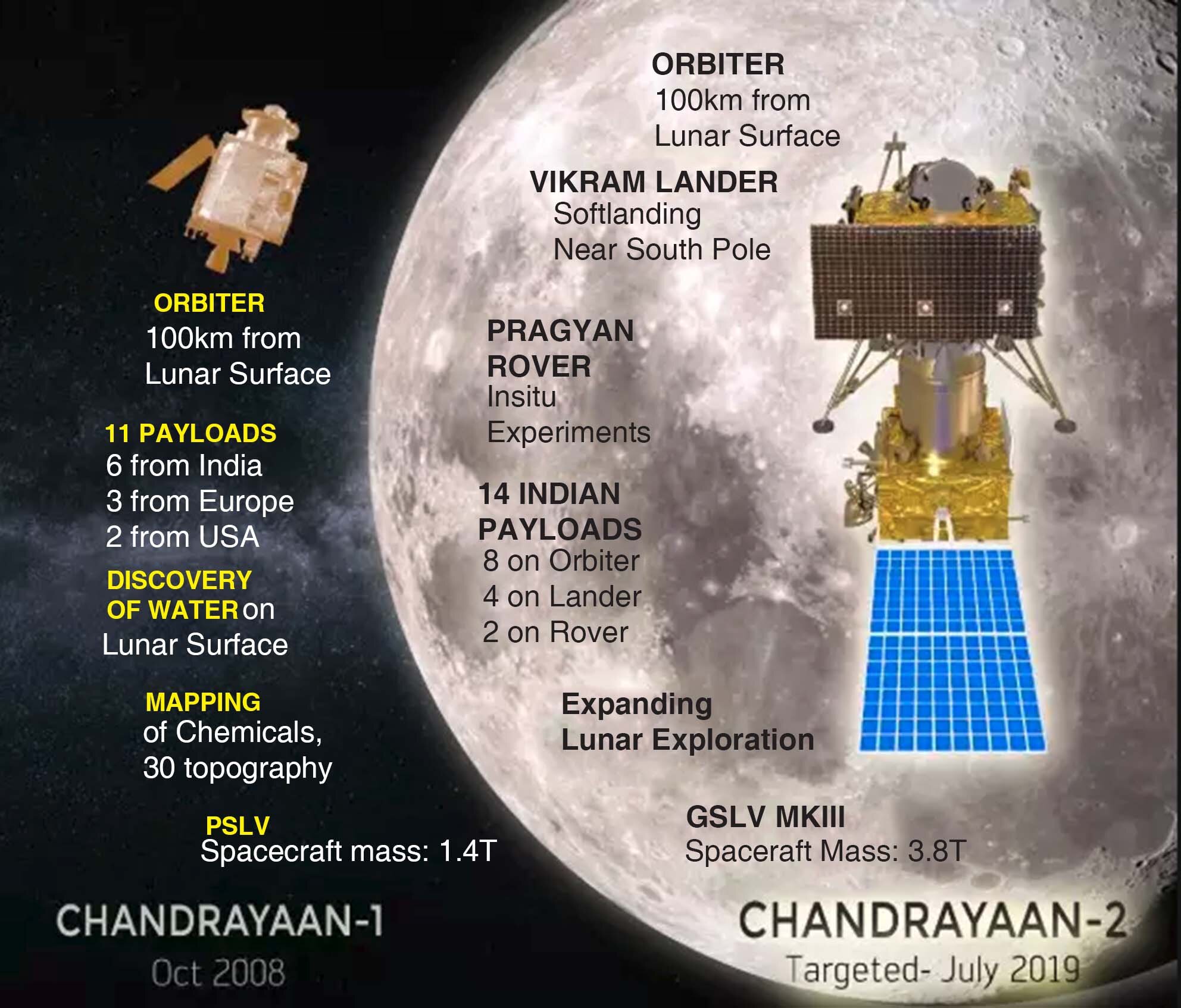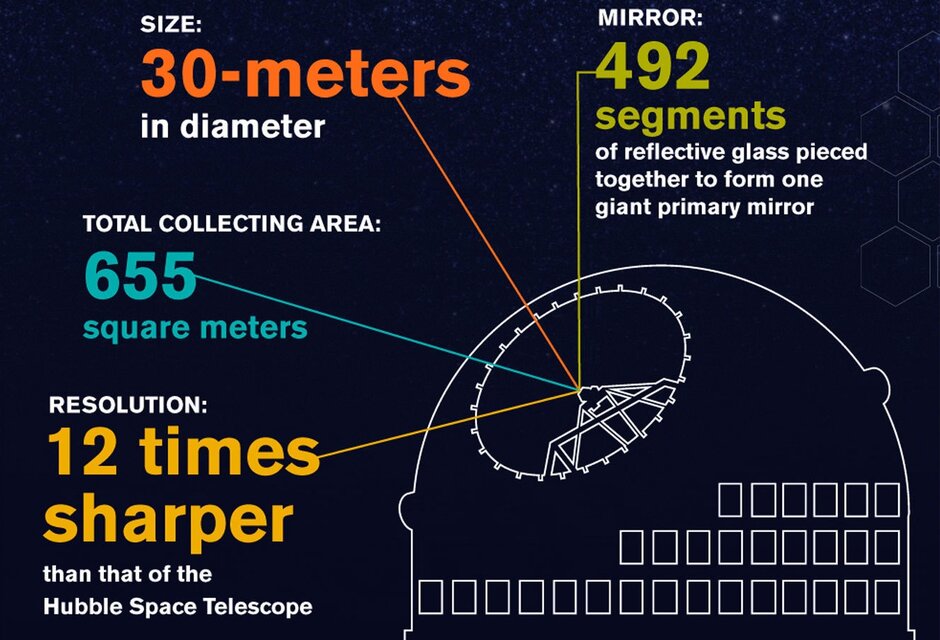Important Facts For Prelims (11th May 2019) | 11 May 2019
Thirty Meter Telescope (TMT)
- Thirty Meter Telescope is a new class of extremely large telescopes that will allow us to see deeper into space and observe cosmic objects with unprecedented sensitivity. It is getting built at Mauna Kea, Hawaii, USA.
- With its 30 m prime mirror diameter, TMT will be three times as wide, with nine times more area than the largest currently existing visible-light telescope in the world.
- This will provide unparalleled resolution with TMT images more than 12 times sharper than those from the Hubble Space Telescope. When operational, TMT will provide new observational opportunities in essentially every field of astronomy and astrophysics.
- The TMT International Observatory LLC (TIO), a non-profit organization, was established in May 2014 to carry out the construction and operation phases of the TMT Project.
- The partner members of TIO are:
- Caltech, the University of California, US.
- The National Institutes of Natural Sciences of Japan.
- The National Astronomical Observatories of the Chinese Academy of Sciences.
- The Department of Science and Technology of India.
- National Research Council, Canada.
- The Association of Universities for Research in Astronomy, US.
- Indian government: has given its approval for India’s participation in the TMT project at a total cost of Rs. 1299.8 crores from 2014-2023.
- From the Indian side, this will be a joint project of the Department of Science and Technology (DST) and the Department of Atomic Energy (DAE).
- Inter-University Centre for Astronomy and Astrophysics, Pune; Indian Institute of Astrophysics, Banglore; Aryabhatta Research Institute of Observational Sciences, Nainital are involved in TMT project.
- The Indian industries are making the telescope’s sensors, actuators and its mechanical support structure.
- The project will also provide state-of-the-art high-end technologies to the country, which would benefit a number of industries and R&D centres.
Lunar Lander: Blue Moon
- The space company 'Blue Origin’ has unveiled its lunar lander called the Blue Moon that would be used to transport equipment, and possibly human beings, to the South Pole of the Moon by 2024.
- The lander will be capable of carrying scientific instruments and also rovers for humans.
- The goal is to land on the Moon's south pole, where there is ice. Water can be exploited to produce hydrogen, which in turn could fuel future exploration of the solar system.
- The lander will be part of Blue Origin’s broader vision to build an infrastructure that would sustain the colonization of space by future generations of humans and shift polluting industries off the Earth.
- Blue Origin is working on two other major projects: New Shepard, a suborbital rocket to fly tourists into space; and New Glenn, a partly reusable launch rocket.
Chandrayaan-2
- A recent update from ISRO has stated that the planned 'Chandrayaan-2’ mission will have 14 Indian payloads or study devices.

- Chandrayaan-2 will be India’s second mission to the moon.
- The Chandrayaan-2 will be launched during July 9 to July 16, 2019, with an expected Moon landing on September 6, 2019.
- The 3,800-kg spacecraft includes an orbiter which will circle the moon at 100 km; a five-legged lander called Vikram that will descend on the moon; and a robotic rover, Pragyan, that will probe the lunar terrain around it. ISRO will send the mission on its heavy lift booster – GSLV MkIII.
- ISRO has chosen a landing area at the unexplored lunar south pole. If the mission succeeds, India will be the first to touch down at the south pole. Only China’s Chang’e 4 spacecraft had recently landed on the moon's far side, also known as the dark side because it faces away from the Earth and remains comparatively unknown.
- In October 2008, ISRO launched its orbiter mission Chandrayaan-1.
- The spacecraft had 11 payloads. One of the US payloads shares credit with Chandrayaan-1 for confirming the presence of water ice on the moon.
Recyclable Plastic
According to a study published in the journal ‘Nature Chemistry’, scientists have created a plastic that can be repeatedly recycled without any loss of quality.
Key points
- A new material called poly (diketoenamine) or PDK can, unlike normal plastics, have its monomers separated by a highly acidic solution.
- The material can be fully broken down into its component parts by dunking it in a highly acidic solution.
- The acid separates the monomers from additives that give plastics distinctive look and feel.
- The monomers can be recovered for reuse for as long as possible or upcycled to make another product.
- Scientists believe that this recyclable plastic could be an alternative to non-recyclable plastics in use today. Conventional plastics generally have immutable bonds whereas PDK has reversible bonds that allow the plastic to be recycled more effectively.
- Materials like PDK will help in making the lifecycle of plastics circular and help countries in reducing the plastic pollution. At present, the world produces about 300 million tonnes of plastic waste every year.
Monkeypox Virus
- Singapore has reported its first ever case of rare monkeypox virus.
- Monkeypox virus (MPXV) is an orthopoxvirus that causes a viral disease with symptoms in humans similar, but milder, to those seen in smallpox patients. Symptoms include lesions, fever, muscle aches and chills.
- Transmission is usually via close contact with infected animals such as rodents and monkeys but is limited between people.
- Human monkeypox is endemic in villages of Central and West Africa.
- Outside Africa, human monkeypox infections had only been previously reported in the United States, Britain and Israel.
- There are no specific treatments or vaccines available for monkeypox virus infection, but outbreaks can be controlled.
NOTE: Vaccination against smallpox has been proven to be 85% effective in preventing monkeypox in the past but the vaccine is no longer available to the general public after it was discontinued following global smallpox eradication.

